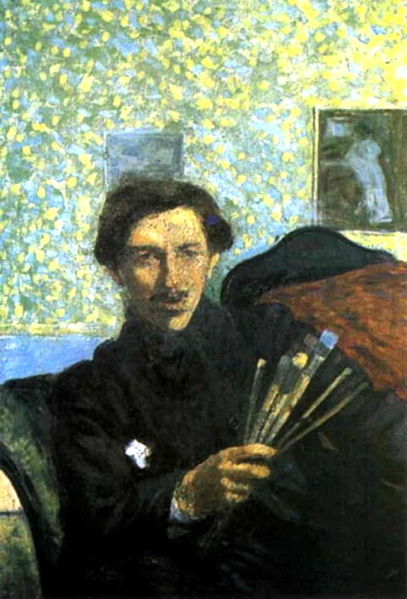| Umberto Boccioni | |
|---|---|
 |
|
| Born | October 19, 1882 |
| Died | August 17, 1916 |
| Nationality | Italian |
| Movement | Futurism |
| Field | Painting Sculpting |
| Works | View Complete Works |
Umberto Boccioni was an Italian painter and sculptor who had considerable intellectual influence on the world of art, even though his life was cut tragically short at age 33.
Boccioni is most often called a “Futurist,” a style of art that emerged mostly in Italy in the early 1900s. Futurism was part art and part social movement which was interested in technology, speed, industrial themes, youth and even violence.
Birth and Education
Umberto Boccioni was born in 1882 in the southern Italian city of Reggio. He studies art at the Scuola Libera del Nudo which belonged to the Accademia di Belle Arti in Rome. His painting style can best be considered post-impressionism, futurist and perhaps influenced by cubism. It is in his works of sculpture where Boccioni’s futuristic themes are most profoundly demonstrated.
Manifesto of Art
In addition to creating highly regarded paintings and sculptures, Boccioni’s intellectual ideas about art, and art movements, were influential. Along with poet Filippo Tommaso Marinetti, Boccioni helped write a manifesto which outlined a vision for where modern art was headed, what it should be, and what it was trying to achieve.
Works
Perhaps his best known work of sculpture is the bronze Unique Forms of Continuity of Space. This is a striking figure which has the general shape of a powerful man walking forward in a thrusting manner. Its forms are flowing, fluid and billowing. It conveys a dynamic feeling of speed and strength. This item was was honored by being depicted on an Italian Euro-coin.
Among his most fascinating paintings is the post-impressionistic or perhaps futurist The Street Enters the House. It shows a woman leaning out over a balcony looking at a busy street below. The sound, clamor, sights and excitement of the street come alive as riotous colors; vaguely human forms are seen running, walking and in general vigorous movement.
Early Death
At the outbreak of World War I, Boccioni was mobilized as a member of the Italian cavalry. He suffered a training mishap in which he was thrown from his horse and trampled. He died from his injuries in the summer of 1916.